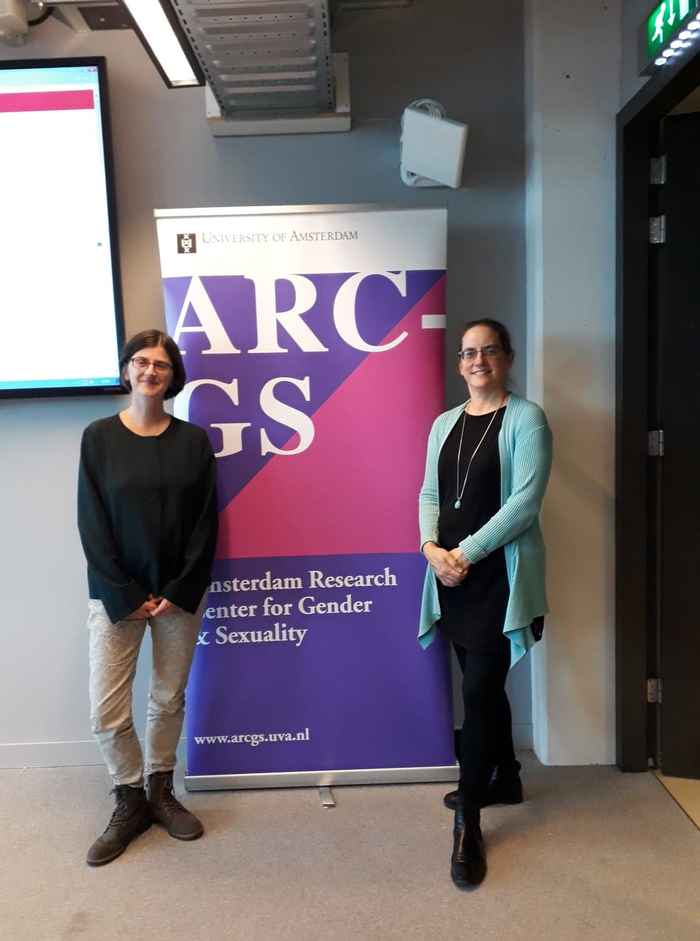"Disability: Between Equality and Difference?" Lecture by Barbara Arneil (Professor of Political Science, University of British Columbia)
By Esther Raffell
In her public lecture for the Centre, Dr Barbara Arneil looked at how an interactive model for addressing disability, by embracing interdependence, can take us beyond and between the age-old trappings of equality vs difference. Women are by no means alone in being failed by the notion of the individual as it is conceptualized at the core of liberal democratic thought. Disability is the backdrop against which the ‘reasonable’ individual is conceived as capable and the disabled excluded from participating in liberal democratic life. Feminist thought can learn and grow from disabled activists’ notions of equality and liberation as contingent on the accommodation and desire for bodily diversity.

The ableism of liberal democratic thought
The first part of the lecture evaluated the work of Locke, Hume, and Rawls in order to illustrate that the conceptual and physical exclusion of disabled personhood is at the centre of liberal democratic thought. Participation in political life is prefaced upon a certain kind of thinking and reasoning citizen, free from supposed mental or physical weaknesses and dependencies viewed to preclude political participation. It This conception manifests a pervasive set of symbols and values that base democratic rights on a particular notion of physical and mental freedom, equality, and reason. Within this conception, physically and mentally impaired people cannot be seen to exist as full citizens. A 20th century welfare state context inherits this distinction, and disability is seen as a problem to be solved in some way, by someone ‘able bodied’. It necessitates prevention, restoration or even cure that is passively received and never authored by disabled people. Disability is categorised out of socio-political activity, outside of ‘normalcy’ – a concept that, Dr Arneil reminds us starkly, was coined by eugenicists in their quest to conceive life that might be ‘untainted’ by any disability.
Models to challenge ableism
Dr Arneil then addressed the challenges disability activists posit to the ableism of this conception. She considers three key perspectives. The first is a civil rights model which sees disability as a potentially universal issue and argues for non-discrimination against individuals with disabilities in order for democracy to function properly. A drawback to this approach is its location and construction of disability entirely within the body of the individual, rather than recognising that the world itself has been built in the narrow image of what is conceived as ‘able-bodied’. A social model helps to rectify this conception, pointing out that the systematic removal of environmental barriers to the lives of those with disabilities rightly locates responsibility with a society which has failed to accommodate them. However, with this social constructivist analysis we risk brushing over the bodily experiences of the individual, implying differences are an undesirable repercussion of an unaccommodating society. We reach the classic feminist conundrum: are we erasing and even vilifying notions of difference in the way we demand equality? How might a model which reconciles these problematics of disability activism reconcile these key tenets of liberation?
A middle ground: implications for equality, difference
In models for addressing disability, Dr Arneil discussed a middle ground developing in international organisations in the last twenty years. The World Health Organisation (WHO) has crucially come to see disability as a condition that people often move into instead of a fixed category. In this way, the WHO has begun to conceptualise disability as part of humankind’s diversity. While it might be seen as a social barrier to which there are material solutions and accommodations, the aim will not always be prevention, and within that approach disability ceases to be seen as something (merely) ‘tolerated’. In such an approach, which looks to acknowledge both individual difference and environmental barriers, disability can be seen as an outcome of context-based interactions between health, physical, social, and attitudinal environment. An active state approach to barrier removal, prioritising and recognising different-bodied people’s historical experiences, brings us towards seeing difference in equality, and vice versa. No longer dogged by the paternalism of previous incarnations of the social model, or the civil model’s narrowly conceived individual, a new kind of personhood can be seen to emerge. Arneil considers an alternative personhood based on networks of care and dependency, bringing us back to feminism and theories on an ethic of care.
New critical junctures
Much food for thought was provided by the lecture, evident in a number of incisive questions put to Dr Arneil during the discussion. Picking back up on how eugenics has framed our understanding of ‘normalcy’, there was a discussion about how possible prejudice towards disabled lives within medical discourses might inform doctors’ advice regarding pregnancy terminations, and how to engage with this critically without playing into the hands of pro-life discourses. It brings us back once more to the critical junctures at which feminist and disability-based thinking intersects. Thank you to Dr Arneil for delivering such an illuminating lecture with far reaching implications for feminism, disability and broader politics of liberation.